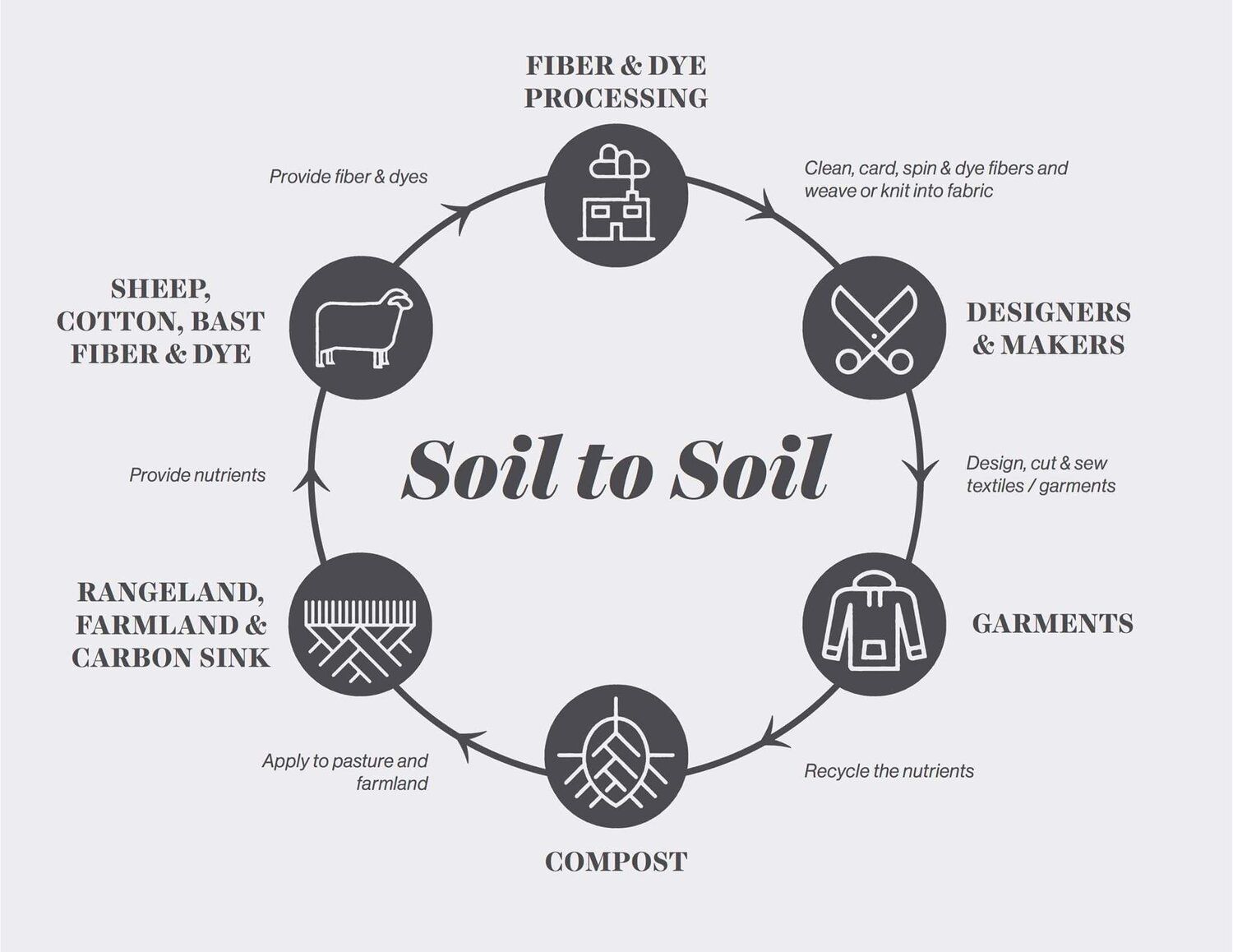A Fibreshed for Ireland
by Malú Colorín
“The soil that feeds us is also the soil that clothes us.” —Rebecca Burgess, founder & director of Fibershed
As we know, people are becoming ever more aware about the kind of food they consume, where it comes from and how it is produced. In a similar way, our clothing choices are also becoming challenged, especially by the new generations: who made my clothes? How were they made? What are the ecological and social implications of my wardrobe? This brings forth a lot of transparency and supply chain questions that global fashion brands have yet to answer. But it has also led to the emergence of smaller brands, focused on slow fashion and committed to supply chain transparency.
It was these same questions that led educator and author Rebecca Burgess to embark on the Wardrobe Challenge in 2009: a year-long experiment in which she would only wear clothes that had been grown, produced and dyed within 150 miles of her home in North California. Inspired by this experiment, Burgess and some of the collaborators who had helped produce her clothes during the challenge started the Fibershed nonprofit in 2012. Their mission is to “develop equity-focused regional and land regenerating natural fibre and dye systems. Our work expands opportunities to implement climate beneficial agriculture, rebuild regional manufacturing, and connect end-users to the source of our fibre through direct educational offerings. We are transforming the economic and ecologic systems that clothe us to generate equitable and climate change ameliorating textile cultures.” In short, the Fibershed is a movement that aims to build healthy soils through local fibre-production systems.
Image: © Fibershed
One of the things that excites me the most about Fibershed is that, even though it focuses on local and community-based textile productions, the model has started spreading all over the world, with Fibreshed affiliates in 45 different bioregions including the United States, the UK, Europe, Canada and India. And yet, it surprises me to see that despite efforts in Ireland such as Project Baa Baa and the Galway Wool Co-Op, most of the wool used for weaving Irish tweeds and knitting Aran jumpers is not even grown in Ireland any more! As for the famous Irish linen, although it is still produced in the island, the fibres themselves are usually imported from continental Europe. Why?
So, by way of introduction, my name is Malú Colorín, I’m a natural dyer, designer and entrepreneur-in-the-making based in West Wicklow and I’d like to invite you, wherever you are in the island, to join the Fibreshed Ireland. There is no fee to join and anyone who is interested in either growing fibres or dye plants, producing or consuming locally-grown, dyed and produced textiles is welcome! As our first activity I’d like to start by building our producer directory and map so we can all begin to get connected and see what communal projects we can come up with. If this is something that excites you, please click here to fill in the form and let’s start creating a regional and truly regenerative fibre system in Ireland!
“Your clothes are an agricultural act — by purchasing and wearing you are voting for the agriculture you do or don’t want to see in the world, and depending on how your clothes break down, you’re either feeding microbes, or you’re leaving a world of plastic pollution”. — Rebecca Burgess, Fibershed founder & director


